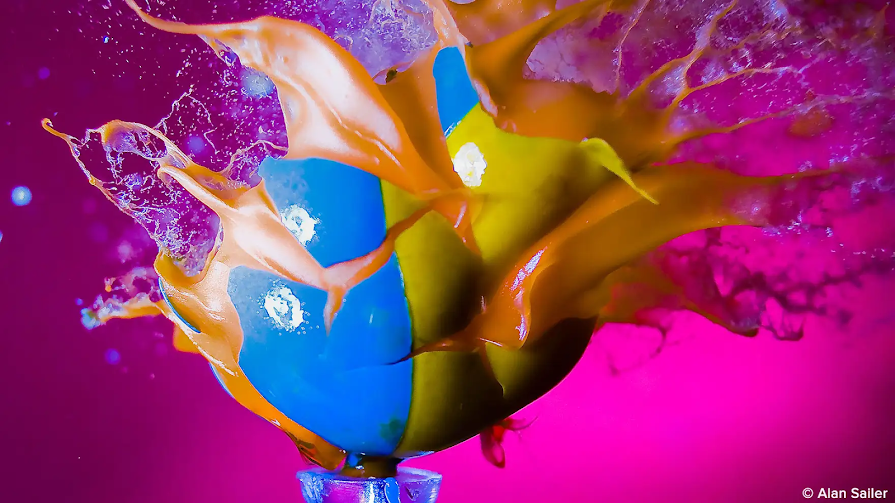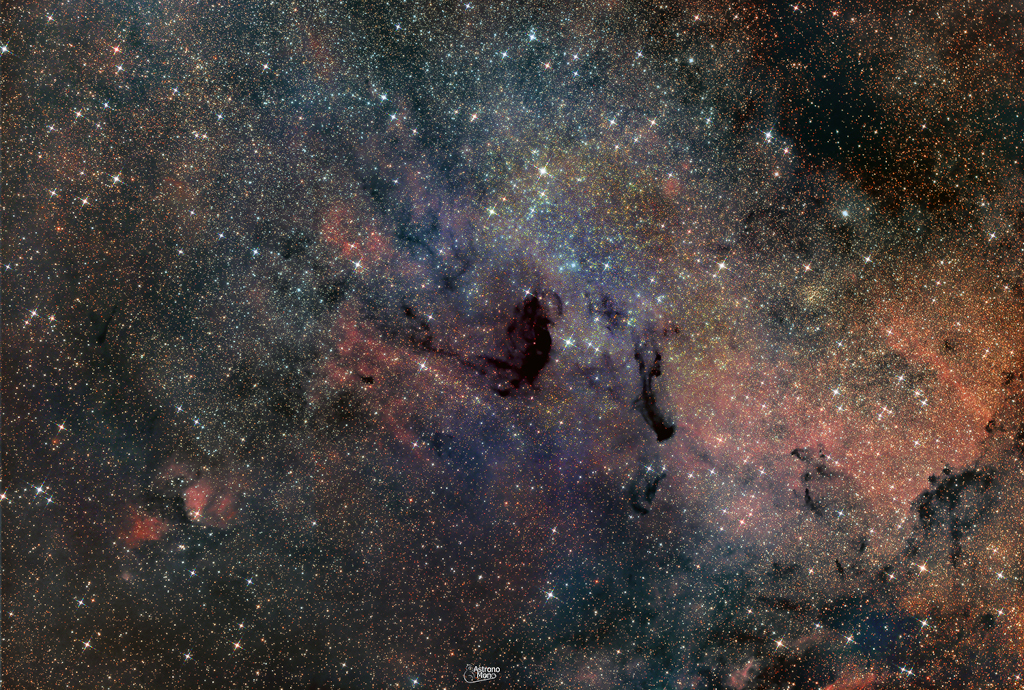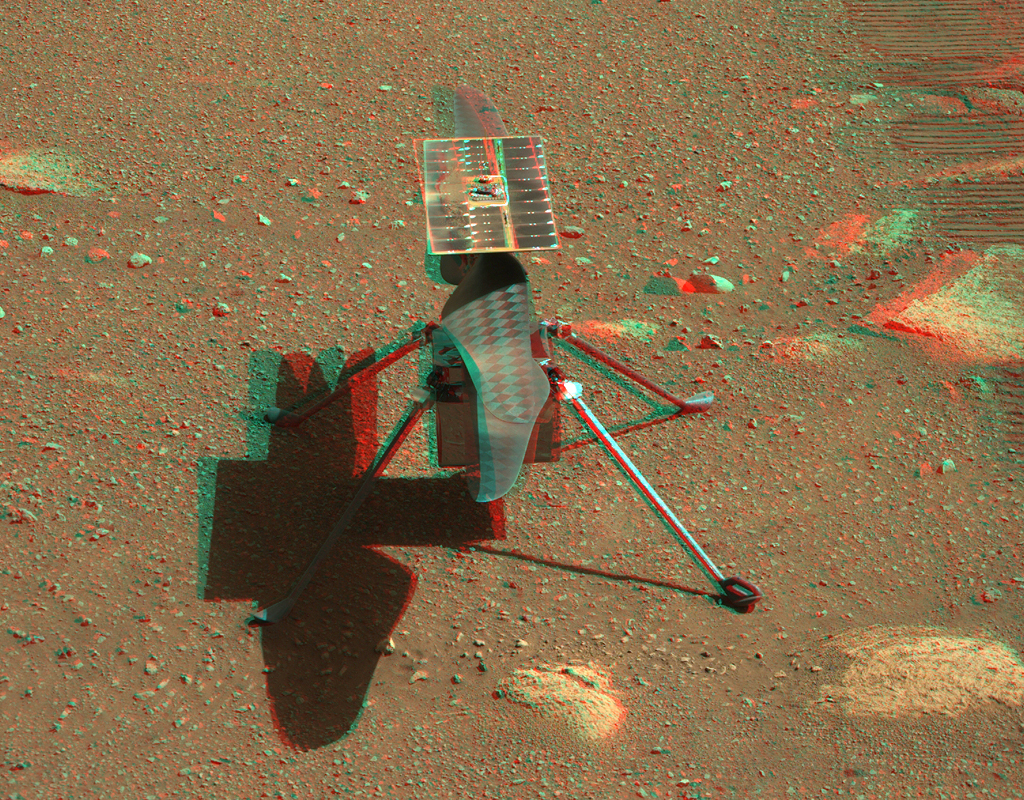Nombre total de pages vues
28/06/2023
ASTRONOMY - Messier 24: Sagittarius Star Cloud
2023 June 28
Image Credit & Copyright: Emmanuel Astronomono
Explanation: Unlike most entries in Charles Messier's famous catalog of deep sky objects, M24 is not a bright galaxy, star cluster, or nebula. It's a gap in nearby, obscuring interstellar dust clouds that allows a view of the distant stars in the Sagittarius spiral arm of our Milky Way galaxy. Direct your gaze through this gap with binoculars or small telescope and you are looking through a window over 300 light-years wide at stars some 10,000 light-years or more from Earth. Sometimes called the Small Sagittarius Star Cloud, M24's luminous stars fill this gorgeous starscape. Covering over 3 degrees or the width of 6 full moons in the constellation Sagittarius, the telescopic field of view includes dark markings B92 and B93 near center, along with other clouds of dust and glowing nebulae toward the center of the Milky Way.
26/06/2023
PHOTOGRAPHIE - le monde explosif d'Alan Sailer
25/06/2023
ASTRONOMY - Lightning on Jupiter
2023 June 25
Image Credit: NASA/JPL-Caltech/SwRI/MSSS; Processing & License: Kevin M. Gill
Explanation: Does lightning occur only on Earth? No. Spacecraft in our Solar System have detected lightning on other planets, including Mars, Jupiter and Saturn, and lightning is likely on Venus, Uranus, and Neptune. Lightning is a sudden rush of electrically charged particles from one location to another. On Earth, drafts of colliding ice and water droplets usually create lightning-generating charge separation, but what happens on Jupiter? Images and data from NASA's Jupiter-orbiting Juno spacecraft bolster previous speculation that Jovian lightning is also created in clouds containing water and ice. In the featured Juno photograph, an optical flash was captured in a large cloud vortex near Jupiter's north pole. During the next few months, Juno will perform several close sweeps over Jupiter's night side, likely allowing the robotic probe to capture more data and images of Jovian lightning.
ASTRONOMY - Sublime carte postale de Mars
24/06/2023
GEMMOLOGIE - La topaze, un silicate
ASTRONOMY - 3D Ingenuity
2023 June 24
Image Credit: NASA, JPL-Caltech, MSSS, ASU
Explanation: The multicolor, stereo imaging Mastcam-Z on the Perseverance rover zoomed in to capture this 3D close-up (get out your red/blue glasses) of the Mars Ingenuity helicopter on mission sol 45. That's Earth-date 2021 April 5. Casting a shadow on the Martian surface, Ingenuity is standing alone on its four landing legs next to the rover's wheel tracks. The experimental helicopter's solar panel, charging batteries that keep it warm through the cold Martian nights and power its flight, sits just above Ingenuity's two 1.2 meter (4 foot) long counter-rotating blades. Thirteen sols later, on April 19, Ingenuity became the first aircraft to perform powered, controlled flight on another planet. It has since gone on to complete more than 50 flights through the thin atmosphere of Mars.
22/06/2023
ASTRONOMY - Stars and Dust across Corona Australis
2023 June 22
Image Credit & Copyright: Alessandro Cipolat Bares
Explanation: Cosmic dust clouds cross a rich field of stars in this telescopic vista near the northern boundary of Corona Australis, the Southern Crown. Part of a sprawling molecular cloud complex this star forming region is a mere 500 light-years away. That's about one third the distance of the more famous stellar nursery known as the Orion Nebula. The 2 degree wide frame would span 15 light-years at the clouds' estimated distance. Mixed with bright nebulosities the dust clouds effectively block light from more distant background stars in the Milky Way and obscure from view embedded stars still in the process of formation. Large dark nebula Bernes 157 is on the left. To its right are a group of pretty reflection nebulae cataloged as NGC 6726, 6727, 6729, and IC 4812. Their characteristic blue color is produced as light from hot stars is reflected by the cosmic dust. The more compact NGC 6729 surrounds young variable star R Coronae Australis. Just below it, filamentary arcs and loops are identified as Herbig Haro objects associated with energetic newborn stars. In fact, at the heart of this area lies the Coronet Cluster, one of the nearest and most active star forming regions.
20/06/2023
ART FRACTAL - Fractale électrisante
GEMMOLOGIE - La rhodochrosite, une couleur éclatante
ASTRONOMY - Portrait of NGC 1055
2025 November 27 Portrait of NGC 1055 Image Credit & Copyright : John Hayes Explanation: Big, beautiful spiral galaxy NGC 1055 is a...

-
2022 September 26 All the Water on Planet Earth Illustration Credit: Jack Cook, Adam Nieman, Woods Hole Oceanographic Institution ; Data ...
-
2025 May 11 The Surface of Venus from Venera 14 Image Credit: Soviet Planetary Exploration Program , Venera 14 ; Processing & Copyri...











